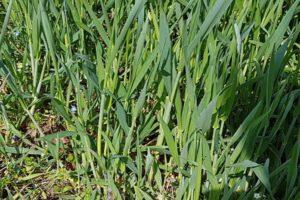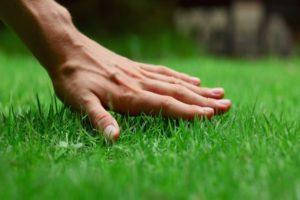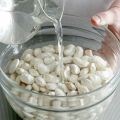The best ways to get rid of acid in the area
Oxalis, popularly called hare cabbage, is a widespread herb that is cultivated for ornamental purposes, for use in cooking and medicine. On the backyard, the grass looks pretty, but multiplies at an insane rate, forcing gardeners to clutch their heads. There are several methods of how to quickly get rid of acid, but you have to tinker.
What does a plant look like
Kislitsa is a herbaceous perennial belonging to the Kislichny family. The species got its name because the leaves have a pleasant sour taste, are good for food. This quality of acid is due to the high concentration of ascorbic and oxalic acid in plant tissues.
Species characteristics:
- stem height - 5-10 cm;
- the leaves are small, triangular or heart-shaped, connected in threes, rich green, silvery green, red, purple or purple (shape and color depend on the variety);
- flowers are small, with five petals (different varieties are white, yellow, pink, lilac);
- the root system is creeping, developed;
- fruits are formed in the spring and summer.
Leaves fold by night, and open with the onset of morning. Garden oxalis is more frost-resistant than a forest relative.
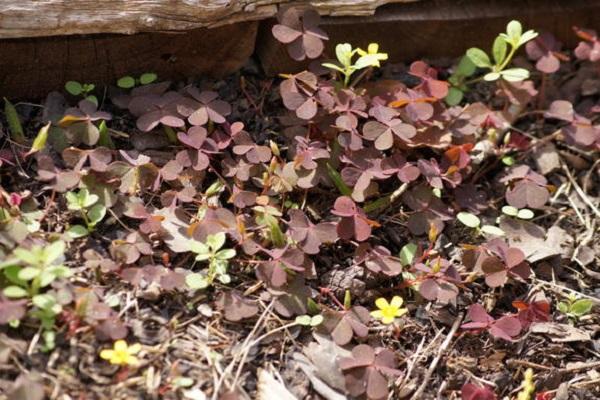
Why is the weed dangerous?
Many grow sorrel in the garden for decorative purposes. But the problem is that the plant reproduces at an incredible rate. The fruits of the acid plant are capsule pods, which, when opening, spread a huge number of small, poppy-like seeds, achenes. The seeds are carried by the wind to a distance of up to 1.5 m, and once they hit the ground, they give seedlings in a short time.
Such fertility leads to the fact that in the absence of control and preventive measures, the plant occupies a significant area with a dense carpet. In one growing season, hare cabbage is able to occupy an area of 1 m2... After several seasons, aerial shoots will cover the entire garden area.
If oxalis grows on a neighboring site, then it will certainly appear on yours, since the transfer of seeds is airy.
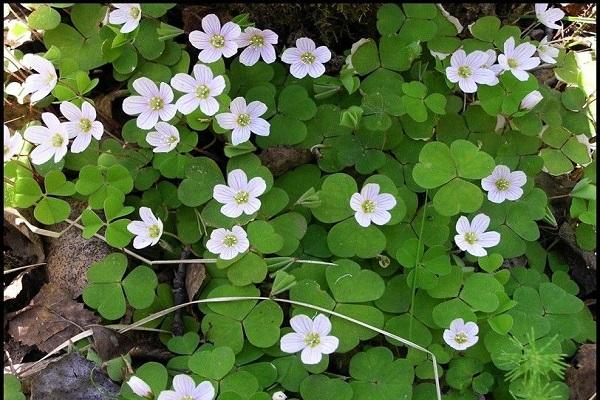
How to get rid of acid in the area
Preventing the appearance of acid is easier than fighting it. But if the weed has already appeared, then you will have to work hard to clear the site. There are mechanical, chemical and folk methods to get rid of harmful herbs.
Herbicide use
The use of agrochemicals is an undesirable measure, but one cannot do without it if the weed has grown rapidly.The herbicide Roundup and preparations with a similar chemical composition are effective against acid. The affected area is treated in spring or autumn.
Many gardeners have a negative attitude towards herbicides. After all, these are potent toxins, and you have to carefully and intensively process the area from the hare cabbage.
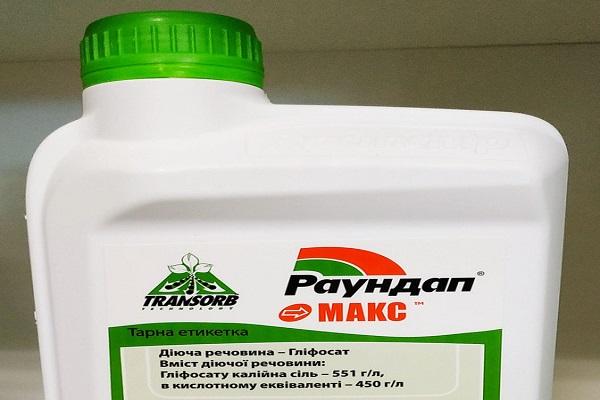
Mechanically
The most common and supported by many gardeners method is mechanical. Repeated and frequent weeding is used when the soil is dry, and the weedy species has not yet begun flowering.
You need to remove the roots carefully, trying to pull out even the smallest ones from the ground. It is easier to tear out the grown, elongated stems, preparing for the formation of buds, they are no longer so fragile, less often they break off. And weeding very small sprouts is a tedious task. The dug out weeds are carefully raked, trying not to leave roots and shoots on the ground, and disposed of.
Throwing acid into the compost heap is undesirable. Its roots are incredibly tenacious. Being among rotting plant debris, they are able to remain alive for 2 years. If such compost is used on the site, then soon you will again have to deal with weeds.

Folk remedies
Experienced gardeners offer several effective ways to kill weeds:
- Mow the emerging flower stalks.
- Mulch the affected area with a dark cloth. You can use Agrotex opaque agrofibre.
- Lime the soil abundantly. Kislitsa does not tolerate lime, it quickly dies.
- Create natural shading that does not allow the light-loving acid plant to develop. For this purpose, tall and bushy cultivated species are planted on the affected area, the branches of which block the soil surface from sunlight.
- Water regularly and generously with strong tea leaves.

Preventive measures
To avoid damaging the site with weeds:
- They uproot weeds, preventing them from blooming and giving seeds. The acid must be removed before the seed pods appear, since even immature achenes can germinate.
- Do not leave removed weeds to dry out in the beds.
- Do not dump the harvested plants into the compost heap. Seed spreading with organic fertilization is even faster than with the wind.
- The decorative acid plant growing on the flower bed is periodically mowed almost to the root. Do not allow it to bloom, otherwise the seeds will spread to the beds.
Cultivars with purple and purple leaves cannot tolerate direct sunlight.

Common gardeners mistakes
Many gardeners make mistakes by growing ornamental acid, which turns into overgrowing of the site:
- It is impossible to provide acidic soil with a sufficient level of soil moisture. In dry soil, thin roots dry out, so to control the spread of weeds, keep the humidity low.
- You should not create flower beds next to the beds. The best option if there is asphalt or concrete covering around the flower bed.
- When weeding, it is advisable to work with a pitchfork, not a shovel. The shovel blade can cut the roots, and new plants will sprout from the pieces remaining in the soil.
Growing up in the garden, hare cabbage interferes with the normal development of garden crops. You will have to be patient to fight the weed. And gardeners who want to start a decorative variety on a flower bed should think carefully.
